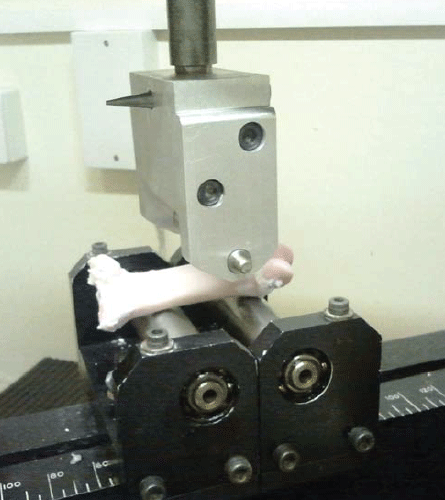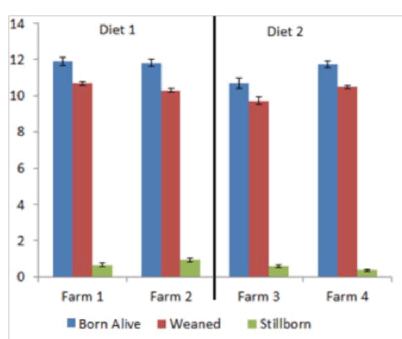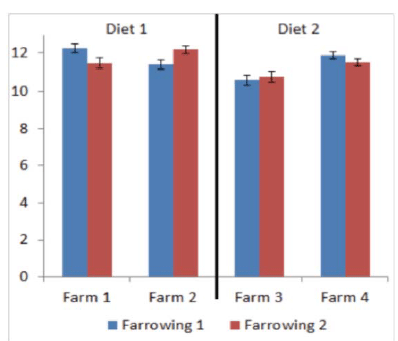



Reducing Phosphorus Levels in Gestating Sow Diets
There were no adverse effects on the performance of the sows in the first or second trial farrowing cycle when fed on a lower level of phosphorus throughout gestation, according to No. 16 in the BPEX series, 'Research into Action'.Can We Safely Reduce the Phosphorus (P) Levels in Gestating Sow Diets?
This project was sponsored by Defra and is a collaboration
between Newcastle University and industry partners BQP
(Dalehead Foods), BOCM Pauls Ltd and BPEX.
The aim of the project was to demonstrate that dietary
phosphorus (P) levels in outdoor gestating sow diets can be
reduced below the current commercial standards without
negative effects on animal health and performance, while at
the same time reducing diffuse phosphorus levels in the
manure and effluent and consequently reducing the
phosphorus load to the environment.
Benefits
- Reduced pollution of phosphorus to the environment
- Reduced need to add additional, costly phosphorus to the diet
- Phosphorus is a finite resource and demand is starting to outstrip supply.
The Trial
Two diets were formulated with differing levels of digestible
P but both including phytase. The diets were fed to gestating
sows on four different farms over two reproductive cycles.
All sows were housed outdoors and each diet was fed on a
specific farm, thus giving two farms per diet.
The levels of digestible phosphorus in the different diets were:
- Diet 1 (current industry diet): 2.55g digestible phosphorus per kg feed
- Diet 2 (BSAS standard diet): 2.20g digestible phosphorus per kg feed.
The performance measures taken were:
- Number of piglets born (as well as stillbirths)
- Number of piglets weaned.
Soil and faecal samples were taken at three points across the trial - the start, midpoint and end. These samples were analysed for phosphorus levels to indicate the loading to the environment through excreta deposition.
Results
Performance
- There was an effect of both diet (P<0.001) and farm (P=0.004) on the numbers of piglets born alive, however, all these effects were largely caused by one of the farms having a smaller litter size than the other three
- Although there was an effect of parity (P<0.001) on the number of piglets born alive, there was no interaction between parity and diet (P>0.4), i.e. the level of phosphorus in the diet did not affect sows of any parity
- There was no difference in the number of piglets born alive after either one or two cycles on a reduced P gestation diet (P>0.05)
- The number of stillbirths was also not affected by diet (P>0.05), nor was the farrowing interval.
Environment
Reducing the input of Pphosphorus through the diets was expected to affect the level of phosphorus output through excreta, thereby reducing environmental pollution. However, there was no indication of this in the analytical results on either the faecal or soil samples (P>0.05).

Conclusion
There was a farm and diet effect shown. However, when
taking into account the previous performance history of the
farms involved, it showed that this effect was present prior
to the change in diet. This makes it reasonable to assume
that the apparent effect of diet was in fact related to a farm
effect.
It can therefore be suggested that there were no
adverse effects on the performance of the sows in the first
or second trial farrowing cycle when fed on a lower level of
phosphorus throughout gestation.

(Diet 1: current Industry diet; Diet 2: BSAS standard)
Furthermore, the absence of an interaction between parity and diet demonstrates that even younger sows are able to
cope with lower levels of phosphorus in the diet without performance
being affected under outdoor conditions. Since outdoor
sows have access to minerals in the soil, results cannot be
applied directly to indoor sows without further testing.
There was no difference detected in phosphorus load to the
environment. The failure to detect an effect might be due
to the sampling difficulties associated with variable feed
intake of individual sows and the uneven patterns of excreta
deposition across paddocks.

(Diet 1: current industry diet; Diet 2: BSAS standard)
April 2013








